By Claire Bacon, ACN, CNC
Obesogens consist of all the chemicals we ingest (through food, drink, air, or through our skin) that alter energy metabolism, increasing adiposity. Many of these chemicals act via alterations in endocrine signaling. They disrupt signaling pathways (e.g., hormone receptors, transcription factors, ROS) in various cell types and tissues that regulate our energy intake and expenditure, nutrient handling, and the way we desire food. Sadly, the end result is adiposity – more fat cells, and bigger fat cells. No one wants that!
Obesogens are also called Endocrine Disrupting Chemicals, or EDCs. They alter the control of food intake and metabolic rate via effects on the pancreas, adipose (fat) tissue, liver, GI tract, brain and/or muscle. Did you know, obesogen exposure as a fetus or young child can set the stage for becoming obese either in the present or much later in life.
Obesogens can be natural (e.g., metals, viruses), synthetic (prescription drugs), environmental (insecticides, plastics, household chemicals, particulate matter), or comprised of food components (fructose, trans-fats, preservatives, emulsifiers). Unfortunately, we truly live in a toxic soup. But once we can identify these chemicals in our households, we can learn to avoid them better.

How Obesogens Affect the Body
The way obesogens affect the body depends on the specific chemical and sometimes, the timing of exposure. Understandably, children are much more sensitive to environmental insults than are adults. However, adults may be more prone to exposures on a chronic basis, especially when related to our jobs.
Some obesogens mimic the effects of estrogen, leading to overstimulation of estrogen receptors in the body. To our detriment, this leads to an increased risk of breast cancer and other hormonally-driven cancers and excessive weight gain.
Other obesogens interfere with the body’s insulin signaling, leading to insulin resistance and an increased risk of Type 2 diabetes. They can also interfere with thyroid function. Thyroid hormones play a key role in regulating metabolism, and disruptions in thyroid function lead to weight gain and other metabolic problems such as hypothyroidism.

Disruption to Metabolism and Hormones
- Disruption of metabolism. Obesogens interfere with the body’s metabolism, altering energy expenditure and nutrient handling. This disruption results in reduced calorie burning, increased fat storage, and a propensity for weight gain.
- Hormonal imbalance. Obesogens act as endocrine disruptors that interfere with the body’s normal functioning of hormones. Whether it’s in relation to regulating appetite, satiety, or metabolism, they disrupt hormonal signaling. This leads to imbalances that affect appetite control and energy regulation, ultimately contributing to weight gain.
- Adipose tissue development. Obesogens impact the development and function of adipose tissue (fat cells). They promote the growth and accumulation of fat cells, leading to an increase in overall body fat mass. This results in weight gain and obesity. The minimum number of fat cells a person has is programmed up until puberty — there’s no maximum number. However, once the body programs that minimum number, it it is very difficult to get back under it. Therefore, it’s even harder for overweight individuals to keep off the weight they’ve been carrying for decades.
- Insulin resistance. Some obesogens interfere with insulin signaling, leading to insulin resistance. Insulin helps regulate blood sugar levels and facilitates the uptake of glucose by cells for energy. When the body becomes insulin resistant, it leads to elevated blood sugar levels. low energy, and an increased risk of obesity.
- Appetite dysregulation. Obesogens affect the regulation of appetite and satiety signals in the brain, leading to disruptions in hunger and fullness cues. This results in a higher likelihood of overeating, ultimately contributing to weight gain.

Specific Actions of Obesogens
In our daily lives, exposures to obesogens can occur via air, water, food, skin contact or dust inhalation.
The following chart summarizes common obesogens and what they do:
| 1. Solvents (polychlorinated biphenyls (PCBs)) are persistent in seafood and poultry | Causes increased gut permeability, leaky gut, LPS and inflammation, causes gut membrane disruptions and gut dysbiosis |
| 2. Pesticides (e.g., dichlorodiphenyl-trichloroethane (DDT and DDE), chlorpyrifos, diazinon, permethrin, neonicotinoids, TBT) and fungicides, and insecticides | Stimulates adipocyte differentiation and lipogenesis, increases the expression of adipocyte marker genes, induces lipid accumulation, increases triglyceride storage, increases epididymal adipose mass in adults, formation of ectopic adipocytes in and around gonadal tissues, can act as an estrogen receptor. Binds to the mitochondrial respiration chain complex. Causes leaky gut and skin issues. |
| 3. Non-stick coatings (e.g., per- and polyfluorinated substances (PFAS)) | Linked to cancer, hormone disruption, immune dysfunction, high cholesterol, and obesity. |
| 4. Clothing and furniture protectants (e.g., polybrominated diphenyl ethers (PBDEs), organophosphate flame retardants | Causes adipogenesis, increases lipid droplets in hMSCs that differentiate into osteoblasts |
| 5. Food preservatives/additives/emulsifiers (e.g., parabens, monosodium glutamate, carboxymethylcellulose, 3-tert-butyl-4-hydroxyanisole (3-BHA) and DOSS) | 3-BHA induces the differentiation of fat cells and increases cellular lipid accumulation, induces adipogenesis |

More chemical obesogens…
| 6. Personal care products (e.g., phthalates, parabens) and synthetic perfumes, MEHP, DEHP | Parabens and synthetic perfumes induce the differentiation of fat cells |
| 7. Plastics (e.g., phthalates, bisphenols, DBT, DBP), scented plastics | BPA and phthalates induce the differentiation of fat cells, induce adipogenesis, causes insulin resistance, increase in white adipose tissue, and endoplasmic reticulum stress. |
| 8. Resins and can linings (e.g., bisphenols BPA, BPF, and BPS) | BPS increases cellular lipid accumulation, increases glucose uptake, and increases leptin production (can lead to leptin resistance), increases triglycerides, increases expression of adipogenic genes, increases body weight, fat mass, chronic inflammation, and inflame in white adipose tissues. BPA increases triglycerides, causes hyper-insulinemia, changes methylation |
| 9. Air pollutants (e.g., polycyclic aromatic hydrocarbons (PAHs), microplastics, and fine particulate matter (PM2.5)). | High potential cancer risk in winter, PM2.5 can penetrate the respiratory tract and enter circulation. Can cause breast cancer, hematopoietic system disorders, and bladder cancers |
| 10. Some mixed second-generation anti-psychotics and mood-stabilizers, Escitalopram, Sertraline, Aripiprazole, Asenapine, Clozapine, Olanzapine, Paliperidone, Quetiapine, Risperidone, Oxcarbazepine, Valproate, also some early-life antibiotics | Enhances lipid accumulation and adipose neogenesis |
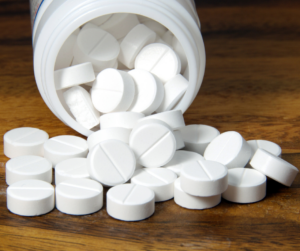
Even More Obesogens…
| 11. Diethylstilbestrol (DES – synthetic estrogen) | Induces significant increase in body weight, causes reproductive abnormalities |
| 12. Cadmium (from contaminated foods, often iceberg lettuce, also from smoking) | Causes impaired glucose and insulin functioning, hepatic steatosis, weight gain, oxidative stress, and mitochondrial dysfunction, increased lipid accumulation |
| 13. Silver Nanoparticles (bactericides found in fabric of athletic clothing to reduce odor | Increases reactive oxidative species (ROS) within beige adipocytes, activates the MAPK-ERK pathway, inhibits adipocyte thermogenesis, inhibits mitochondrial functioning. |
| 14. Fructose and High Fructose Corn Syrup | Causes increased intestinal permeability which leads to chronic inflammation |
| 15. Artificial Sweeteners | Decrease the abundance of Akkermansia muciniphila, which causes gut dysbiosis, leading to glucose intolerance, increases secretion of incretins leading to weight gain, increases LPS lipopolysaccharide which causes inflammation |
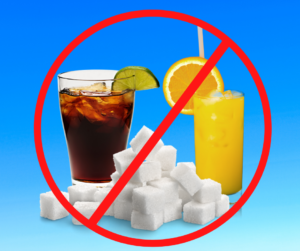
The Gut Microbiome As a Saving Grace
Also consider the gut microbiome. Bacteroidetes, Firmicutes, and Actinobacteria are the most common bacteria present. They produce a variety of enzymes that degrade dietary fiber. Gas and bloating would be prime signals that something is “off” in your gut microbiome.
The obese microbiome is characterized by the predominance of Bacteroidetes over Firmicutes in the gut. You might think, “Oh, I just need to take the right probiotic.” However, there is no single bacterial phenotype, or “core” human gut microbiome that is absolutely beneficial. It is more important to have a great diversity of well-functioning gut bacteria. Diversity is the main requirement of a healthy gut.
The gut employs a multilayered mucus structure to maintain distance between the gut epithelial cells and the gut microbiota as a protective mechanism. EDCs tend to increase the permeability of the small intestine, sending bacterial pathogens into the body’s circulation where they can affect our organs and receptors.

Food Additives and Artificial Sweeteners
Food additives and artificial sweeteners interfere with the gut microbiota and gut barrier function, which could lead to intestinal, metabolic, and autoimmune disorders. This is a huge problem, because foods that contain these ingredients are often marketed as healthy.
Sucralose is present in many energy drinks and diet sodas. Be sure to read the labels on Low Calorie processed foods! Sucralose can have a major impact on your metabolism, and it’s not good. Chronic consumption of sucralose can affect your insulin and glucose response – even if you’re young and otherwise healthy! It’s a delayed effect, one that you may not notice for a while.
What happens is that Sucralose and other sweeteners cause an imbalance of the intestinal microbiota. Over time, you maintain less of the good bacteria you need, and get more of the bad bacteria that don’t confer the protection and benefits you want. The eventual dysbiosis causes metabolic disturbances – where your fat burning and fat storage systems don’t work properly. Clearly, our good gut bacteria are doing more work than we are aware of, deep inside our bodies. When in balance, they protect us from harm and run a solid metabolism.
In addition, because the brain associates the sweet taste from Sucralose with an upcoming trigger of glucose, the pancreas will go ahead and release a spurt of insulin. Note, this process happens even without a load of calories! The body is so intelligent! The brain will call out to the pancreas for a dose of insulin just by the trigger of the sweet taste! Not the calories!

Generational Toxicity: Passing Obesogens to our Children
The study of EDCs offers insights into how normal metabolic processes can be disrupted, and why the population is becoming unhealthier, particularly with respect to metabolic disease. Identification and avoidance of these chemicals needs to be our top priority.
As it turns out, certain chemicals are so harmful and so persistent in our environment that they can still be detected in our bodies, even decades after domestic production has ceased. For instance, the mosquito-killer DDT was banned in the United States in 1972 and in many parts of the world. But this chemical and its metabolite, DDE, can still be detected in adipose tissue and breast milk. These can be passed on from mother to child, even without new exposures.
Cutting-edge science is looking at epigenetics, and the lasting impacts to our genetic makeup following exposures to certain chemicals. If you read the works of Dr. Francis Pottenger (on 900 cats) or researcher Michael Skinner (on rats) you’ll be amazed to see the detrimental effects carried through to later generations. These could include poor jaw structure, bone and joint malformations, reduced fertility, and lowered IQ.
Especially when we consider the lasting effects of these “forever chemicals”, the presence of “generational toxicity” may be the most important issue of our lifetime, and that of the future existence of humanity.

Types of Chemical Obesogens to Avoid:
In Our Medicine Cabinet:
Xenoestrogens: These obesogens are found in many antibiotics and prescription drugs. Only take antibiotics when a bacterial infection is present, and minimize other medicines to only what is absolutely necesssary.
In Our Yards and Farms:
Pesticides: Our conventional food receives thousands of chemicals through synthetic pesticides.

In Food Containers:
BPA: Hard plastic bottles for sports drinks contain BPA. And it exists in the linings of canned foods, unless the label specifically says ‘BPA free’. Plastics have triangular markings imprinted within the plastic, so avoid plastics with the number 3 or 7, as these may leach BPA. Number 3 contains phthalates. Instead look for the numbers 1, 2, 4, 5, and 6, which are unlikely to contain BPA.
BPS: This became the replacement for BPA, when the truth about BPA came out. However, it is just as bad. If in doubt, read your bottle manufacturer’s website, or write to them.
Phthalates: You can find phthalates in certain plastic food containers, and in nail polish and air fresheners. They disrupt fat metabolism by damaging the liver, kidneys, lungs, and reproductive system.

PFOA: the main ingredient in Teflon cookware, which leaches into our food every time you cook on it. It is one of the major obesogens, and a known carcinogen.
PVC: Look to cling-wrapped meats and cheeses, and other plastic-wrapped foods to find PVC. You can also find it in the plastic pipes leading to your faucet. A Water Purifier is essential, to filter out dozens of obesogens, toxins, and heavy metals.
Polystyrene / styrofoam: This chemical, packed with obesogens, leaches into your take-out coffee, and other hot drinks.
Obesogens in Our Food
Meat, eggs, and cheese: Factory farmed animals consume growth hormone to increase their mass (and higher profits). If you consume dairy, choose organic and rBST free, to avoid these fattening chemicals. For eggs, choose organic, free range, and antibiotic free.
High Fructose Corn Syrup (HFCS): HFCS is now in almost every type of packaged food, due to it being far cheaper to manufacture than sugar. Regular consumption of HFCS doubles your chances of becoming obese, and increases inflammatory uric acid, too. Also called: corn syrup, corn sugar, fructose, glucose syrup, maize syrup, or isoglucose.
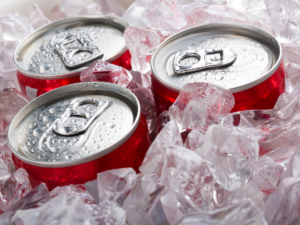
Reminder: Always eat organic produce!
In Our Water
Tap water: Metal pipes can leach heavy metals into our water. Heavy metals are obesogens. Also, modern PVC piping can also leak obesogen chemicals into the water.
Fluoride in excess can lead to fibromyalgia, weak bones, heart disease, ADHD and other degenerative diseases. It can contribute to psychological disorders, Alzheimer’s disease, hypothyroidism, bone cancer, and osteoporosis. Fluoride is a goitrogen, which blocks the thyroid from utilizing iodine. Other symptoms of fluoride build up are: arthritic joints, diabetes, insomnia, and chronic skin rashes.
How to Detox Obesogens:
There is no shortage of ways you can try to get these “forever chemicals” out of your body. It’s hard to say what will work the best for you. The key is to continually be working on avoiding and removing chemicals from your life. It might be the #1 focus of our practice, and the #1 strategy for people who want to lose weight.
Things to Do
Do purifying Cleanse programs on a regular basis. Use liver-promoting foods, anti-microbial herbs, and binders to sweep unwanted debris and toxins out through the colon.
Always remember, drink pure, filtered water and sweat daily!
Spend time outdoors in nature and open your windows. Often, indoor air quality is much worse than the natural air outside.
On a regular basis, do intermittent fasting. Extend your fast for a full day once a week.
Do coffee enemas with light roast, organic, mold free coffee.
Things to Eat
- Cruciferous vegetables like broccoli, cauliflower, Brussels sprouts, and kale
- Dandelion greens
- Garlic and/or Turmeric in your cooking
- Radishes
- A Greens powder in your smoothies.
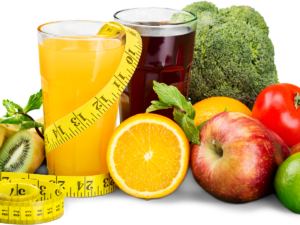
As much as you can, Include organic vegetable juicing in your morning routine.
Whenever possible, eat more fiber (gluten free oats, beets, apples, beans, radishes, etc.).
Things to Take
Fortunately, there are a multitude of nutritional supplements that can help. Unfortunately, there are so many you can get confused and overwhelmed! Rotate through a variety and see what works best for you:
- Liver detoxifiers like Milk thistle, DIM, SAMe, Methylfolate, Reishi and other mushrooms
- Anti-inflammatory Calcium D-Glucarate, Tamarind extract
- Binders like Fulvic and Humic acid, Bentonite clay
To ensure good health, take a well-rounded probiotic with Lactobacillus, Bifidobacterium, Saccharomyces, and occasionally add a spore-based Bacillus blend. As an alternative, consume small portions of non-dairy fermented foods, like Kombucha tea, coconut kefir, Kim Chi, raw sauerkraut, or fermented pickles.
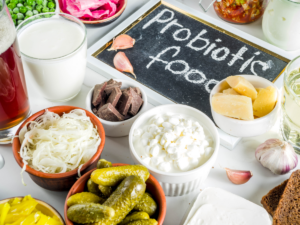
Things to Buy
Get an air purifier for your bedroom or living room where you spend the most time.
Add a whole-house water filter to your main water line.
Final Thoughts
Avoiding and detoxing obesogens is hard. We have to be constantly diligent! It’s a process of continual learning, and once we know better, we can do better.
Keep your chin up, and keep looking out for new, better, and nontoxic items. It’s worth every bit of extra effort to keep your home and family safe!
Other Articles on Diet and Weight Loss:
https://www.drbobbacon.com/yes-we-have-ketones
https://www.drbobbacon.com/glyphosate-contamination
https://www.drbobbacon.com/edible-insects
https://www.drbobbacon.com/hydration-for-better-health-finding-the-right-water-for-you
https://www.drbobbacon.com/juicing-vs-blending-how-to-use-both-to-boost-your-health
https://www.drbobbacon.com/3-incredible-benefits-of-full-fat-dairy


